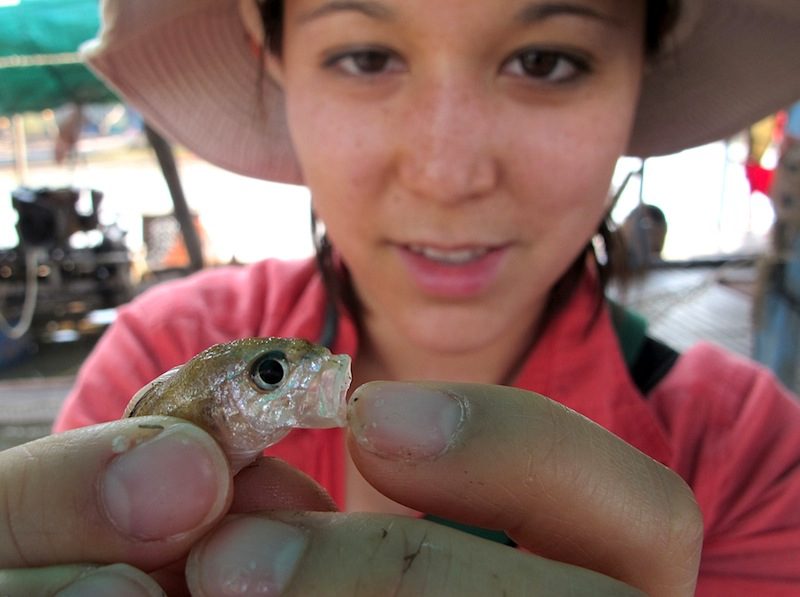Monday February 20, 2012
On a recent trip to Southeast Asia a FISHBIO biologist examined a small fish captured in a net in the Cambodian dai (bagnet) fishery. Fish have evolved different jaw structures to maximize their effectiveness at capturing their preferred food type(s). The shape and location of a fish’s mouth can help fish biologists identify a species and its general diet. For instance, this fish from the Tonle Sap River has an impressive protrusible jaw, an indication that its diet likely consists of mobile prey such as zooplankton or other smaller fish. The protrusibility of the mouth can be an important indicator of food type, since it can determine the type of prey consumed and the method of prey capture. When its jaws and mouth are fully protruded, the mouth cavity is enlarged and adept to quickly suck in prey. Other species with protrusible mouths that are abundant in the United States include largemouth and striped bass, two well known predatory gamefish.
Check back over the next few weeks for more posts on our adventures and the interesting fish we captured in the Mekong Basin…

